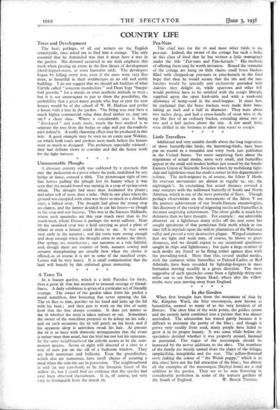Little Travellers Additional and very notable details about the long
migrations of those butterfly-like birds, the humming-birds, have been put on record in a beautiful and witty book just published in the United States. Yet more, surprising facts about the migrations of actual moths, some very small, and butterflies appear in the small and modest leaflets just issued by the South- Eastern Union of Scientific Societies which by mobilising light- ship and lighthouse-men has made a corner in this department of _science. The arch-migrant is, of course, the Silver Y Moth. Its overseas movements are almost as regular as, say, the nightingale's. In everything but actual distance covered it may compare with the milkweed butterfly of South and North America, which is one of the most powerful of fliers. Though perhaps observations on the movements of the Silver Y are the greatest achievement of our South-Eastern entomologists, this discovery of the variety of migrating moths and' autterffies is the most surprising achievement. The silver girdle is much less defensive than we have thought. For example : one admirable obserier on a' lighthouse many miles off the east coast has caught specimens of that pernicious little moth which at one time fell in myriads upon the willow plantations of the Waveney valley and proved a very destrUctive plague. Winged creatures that are light and weak may, of course, be blown to great distances, and we should expect to see occasional specimens caught in ships and lighthouses; but quite a large number of such moths are foUnd to be flying rather against than with the previling wind. More than' this, several smaller moths, with the common white butterflies or Painted Ladies or Red Admitals, have been recorded by lightship-keepers in mass formation moving steadily in a given direCtion. The most suggestive of such spectacles conic from a lightship thirty-one miles out to sea from Spurn Head, where also the willow moths were seen. moving away from England.
.* * • * *


















































 Previous page
Previous page